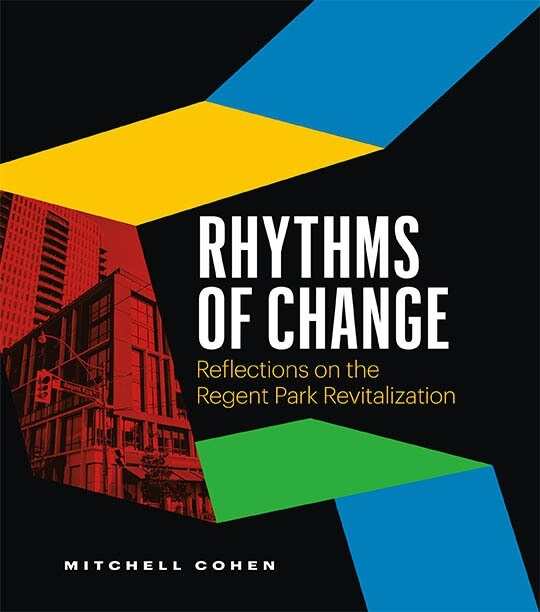Rhythms of Change
Reflections on the Regent Park Revitalization
Rhythms of Change is a revealing insider’s history of a neighborhood’s improbable transformation.
Real estate developer Mitchell Cohen’s nostalgic text Rhythms of Change is about the work of transforming a notorious housing unit into not just a new building but a new way of life for its residents.
The public housing in Toronto’s Regent Park was once known for its poverty, crime, and despair. Reinventing it was colossal project that spanned years of building and community nurturing with often limited resources and support. Here, that work is recounted in detail, encompassing both triumphs and setbacks; each phase of the project is covered, from finding alternate lodgings for displaced residents to ensuring that recreation, arts, and a grocery store were accessible to them when they returned. Further, the countless public- and private-sector figures who played a role are recalled alongside building plans and speeches. There are profiles of residents, executives, and politicians. The result is a nuanced insider’s look at a process of revitalization.
Complex and politically sensitive challenges are chronicled throughout, including the work of making space for future generations to break free from cycles of poverty and stigmatization. Project leaders had to contend with inaccurate news stories, potential scandals, and government red tape. Still, they stayed the course, determined to complete the multiphase project.
The prose is informal, with slang favored over technical jargon—a breezy take on the project. However, it often takes on the flavor of a sales pitch, with as much “sell” in the recollections as there is “tell,” pulling focus from the transformation of Regent Park itself. Further, the choice to couch the chapters as “verses” is gimmicky, detracting from the book’s wealth of information about the oft villainized neighborhood that Cohen helped to transform despite the challenges of bureaucracy and the private sector’s chronic risk-averse mindset—a feat needing no additional superlatives. And the book’s dismissal of critics who opposed various aspects of the project also veers into unnuanced territory—in particular, when the book covers a corporate sponsorship that fell into doubt. However, Cohen’s emotions are well woven into the book’s factual information, enhancing understanding of the stakes involved and deepening a sense of how various strategies were employed and why.
An insider’s history of a neighborhood’s transformation, Rhythms of Change covers the inner workings and perpetual negotiations that were needed to revitalize a forsaken urban area without gentrifying it.
Reviewed by
Alexandra Kitty
Disclosure: This article is not an endorsement, but a review. The publisher of this book provided free copies of the book and paid a small fee to have their book reviewed by a professional reviewer. Foreword Reviews and Clarion Reviews make no guarantee that the publisher will receive a positive review. Foreword Magazine, Inc. is disclosing this in accordance with the Federal Trade Commission’s 16 CFR, Part 255.

